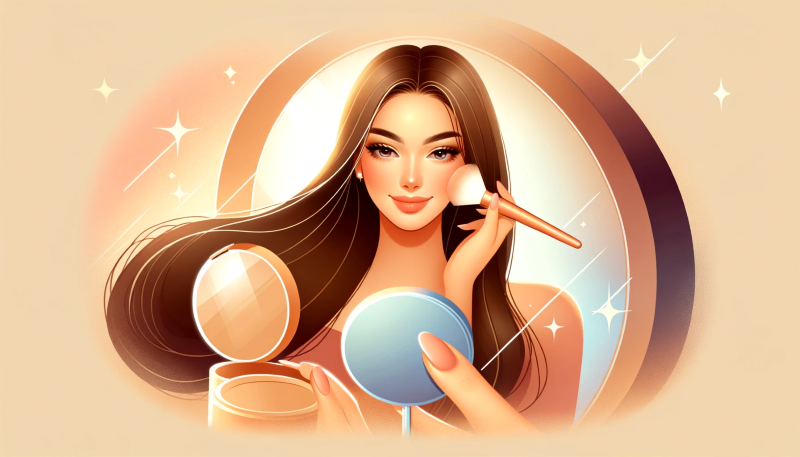
あなたの手にあるトレカは、ただの紙の欠片ではありません。
それは、戦略的に売却すれば、意外な財宝に変わり得る宝物です。
しかし、真の価値を引き出すためには、専門的な知識と戦略が必要です。
この記事では、カードの価値を正確に見極め、市場で最高の価格を実現するための秘訣を紐解きます。
専門家の評価のもと、カードの状態を見極め、市場価値を把握し、隠れたレアカードの価値を発見し、最終的には巧みな交渉戦略で高価売却に繋げる方法をご紹介します。
あなたのトレカコレクションが未知の価値を秘めている可能性に気づき、売却の準備を始めましょう。
専門家によるトレカ評価のメリットと選び方
トレカの世界では、カードの真の価値を正確に判断することが売却成功の鍵です。
この点で、専門家による評価は非常に価値があります。
しかし、適切な評価者を見つけ、そのサービスを最大限に活用するためには、いくつかのポイントを理解しておく必要があります。
専門家の評価を受けるメリット
専門家の評価を受けるメリットは次の3つです。
- 正確な価値判断
- 市場価値の把握
- 隠れたレアカードの発見
正確な価値判断
専門家は、長年の経験と豊富な知識を持っているため、トレカの価値を正確に評価できます。
これにより、適正価格での売却が可能になります。
市場価値の把握
専門家は最新の市場トレンドや価格動向にも精通しているため、カードが現在どの程度の価値を持っているのかを理解するのに役立ちます。
隠れたレアカードの発見
時には、コレクションの中に見過ごされがちなレアカードが隠れていることも。
専門家はこれらの隠れた宝石を見つけ出すのに非常に有能です。
適切な評価者の選び方
適切な評価者の選び方は次の3つのポイントをチェックしてください。
- 専門知識と経験
- 評判と信頼性
- 透明な評価プロセス
専門知識と経験
専門家を選ぶ際には、その分野での専門知識と豊富な経験を持っているかを確認しましょう。
特定のトレカシリーズやブランドに特化した知識がある評価者を選ぶと良いでしょう。
評判と信頼性
専門家の評判や以前のクライアントからのフィードバックを調査します。
信頼できる評価者は、コミュニティ内での評判も良いはずです。
透明な評価プロセス
評価プロセスが透明であることを確認しましょう。
評価の基準、方法、そしてコストについて明確に説明してくれる専門家を選びます。
専門家による評価を受けることは、トレカを適正価格で売却する上で非常に有効な手段です。
適切な評価者を見つけることができれば、カードの真の価値を知り、市場での競争力を高めることができます。
専門家の評価を通じて、トレカ売却の成功率を大きく高めることができるでしょう。
カードの状態を判断する:評価の基準
トレカの世界では、カードの状態がその価値を大きく左右します。
状態の良し悪しを判断するためには、細部にわたる注意深い検査が必要です。
ここでは、トレカの状態を正確に評価する際の基準と、そのコンディションが価格に与える影響について、主要なチェックポイントを解説します。
1.表面の状態
最初に注目すべきはカードの表面です。
傷、擦れ、汚れがないかを確認しましょう。
特に光沢のあるカードや画像部分にダメージがあると、価値は著しく低下します。
細かなスクラッチも高品質の拡大鏡でチェックする価値があります。
2.エッジとコーナー
カードのエッジやコーナーの状態も重要な評価ポイントです。
ここが擦れていたり、折れ曲がっていたりすると、カードの価値は下がります。
シャープで未損傷のエッジとコーナーは、高品質を示す証です。
3.色褪せと変色
長期間の保管や不適切な環境下での展示によって、カードの色が褪せたり変色したりすることがあります。
元の鮮やかな色彩を保っているか、紫外線による影響を受けていないかをチェックします。
4.曲がりや反り
カードが平らでなく、曲がっていたり反っていたりする場合、これはコンディションの悪化を意味します。
特に、湿度の影響でカードが反ることがありますので、この点を慎重に確認しましょう。
5.偽造品の識別
高価値のカードの中には、残念ながら偽造品が存在することがあります。
細部の印刷品質や紙質、さらには特有のセキュリティ機能を通じて、真贋を見極めることが重要です。
これらのチェックポイントに注意を払い、カードの状態を評価することで、その真の価値を見極めることができます。
カードのコンディションは、買い手の目にどう映るか、そして最終的な販売価格にどう影響するかを決定する上で、決定的な要素となります。
状態の良いカードは、コレクターや投資家にとって大きな魅力となり、結果として高額での売却につながるのです。
市場価値を把握する:リサーチの重要性
トレカを売却する際に最も重要なステップの一つは、その市場価値を正確に把握することです。
正確な市場価値を知ることは、適切な価格設定を行い、最終的に満足のいく売却を実現するための鍵となります。
以下に、トレカの市場価値を理解するためのリサーチ方法と価格動向を分析する際の重要ポイントを紹介します。
オンラインオークションサイトの活用
オンラインオークションサイトは、トレカの現在の市場価値を知る上で貴重なリソースです。
終了したオークションの落札価格を調査することで、同様のカードがどの程度の価格で取引されているかの実態を掴むことができます。
特定のカードに対する需要が高まっているか、または価格が下落しているかの傾向も見えてきます。
トレカ専門のデータベースと価格ガイドの利用
トレカ専門のデータベースや価格ガイドを参照することも、市場価値を把握する上で非常に有効です。
これらのリソースは、専門家による評価や市場分析に基づいた価格情報を提供しており、あなたのカードが一般的にどの程度の価値を持っているかを把握するのに役立ちます。
コレクター・コミュニティとの交流
トレカコレクターのコミュニティに参加することは、市場価値の把握だけでなく、価格動向に影響を与える要因を理解する上でも非常に有益です。
コレクター同士の交流を通じて、特定のカードやシリーズの人気動向、希少性、そしてそれらが価格にどのように影響しているかの実際の情報を得ることができます。
トレンドと季節性の分析
トレカ市場はトレンドや季節性によっても大きく影響を受けます。
新しいシリーズのリリースや特定のイベントが近づくと、関連するカードの価値が上がることがあります。
市場価値を正確に把握するためには、これらの外部要因を常に監視し、価格設定に反映させる必要があります。
トレカの市場価値を正確に理解するためのリサーチは、時間と労力を要する作業ですが、成功した売却には欠かせないプロセスです。
上記の方法とポイントを活用し、あなたのトレカが持つ真の価値を見極めましょう。
これにより、売却時に最適な価格設定を行い、満足のいく取引を実現することができます。
レアカードの隠れた価値を見極める方法
トレカコレクションの中には、一見すると平凡に見えても実は大きな価値を秘めたレアカードや限定版カードが隠れていることがあります。
これらの隠れた宝石を見極めることは、コレクターにとって大きな喜びであり、またコレクションの価値を飛躍的に高める可能性を秘めています。
以下に、レアカードの隠れた価値を見極めるためのヒントと評価時の注意点を紹介します。
1. 製造年と版数の確認
レアカードを見極める最初のステップは、そのカードがいつ、どのくらいの数量で製造されたかを確認することです。
特に、製造年が古く、限定版であるカードは高い価値を持つ可能性があります。
カードの背面や辺りに記載されている情報から、これらの詳細を確認しましょう。
2. 特殊な特徴の調査
多くのレアカードには、特殊な印刷技術やデザインが用いられています。
ホログラム加工、特殊なインク、限定デザインなど、通常のカードにはない特徴を持つカードは、高いコレクション価値を持つことがあります。
細部にわたる観察を怠らないようにしましょう。
3. プロモーションカードの発見
イベント限定や特定のキャンペーンで配布されたプロモーションカードは、その希少性から高い価値を持つことがあります。
これらのカードは通常の流通ルートを通じて入手することができないため、発見した場合は特に注意深く評価する必要があります。
4. コミュニティとの交流
他のコレクターやトレカコミュニティとの積極的な交流を通じて、隠れたレアカードの情報を得ることができます。
経験豊富なコレクターからのアドバイスや情報交換は、見過ごしていたカードの価値を再評価するきっかけとなることがあります。
5. 専門家の意見を参考にする
最終的に、自信が持てない場合は専門家の意見を求めるのも一つの方法です。
プロの評価者は、あなたが見落としていたレアカードの価値を正確に見極めることができます。
レアカードの隠れた価値を見極めることは、コレクションを次のレベルへと引き上げるための重要なステップです。
上記のヒントを心がけながら、あなたのコレクションに眠る未知の宝を発掘しましょう。
高価売却に繋げる交渉戦略
トレカを高価で売却するためには、買取業者や潜在的な購入者との交渉がうまくいくかが鍵を握ります。
ただ単にカードを売りたいというだけではなく、賢い交渉戦略と磨き上げられたコミュニケーションスキルを駆使することで、期待以上の価格での売却が可能になります。
以下に、高価売却に繋げるための交渉戦略とコミュニケーションテクニックを紹介します。
カードの価値を明確にする
交渉を始める前に、あなたが売ろうとしているトレカの価値を明確に理解し、それを相手に伝えられるようにしましょう。
市場価値、希少性、コンディションなど、価値を決定づける要因を具体的に説明できることが重要です。
事前リサーチを行い、同様のカードがどれくらいの価格で取引されているかを把握しておくと良いでしょう。
相手のニーズを理解する
買取業者や潜在的な購入者のニーズを理解し、それに合わせてカードの魅力をアピールすることも交渉において有効です。
例えば、特定のコレクションを完成させたいという購入者の場合は、そのニーズにピッタリ合うカードであることを強調します。
柔軟性を持つ
交渉では、柔軟性を持つことも大切です。
ある程度の価格下落を受け入れる準備をしておくことで、最終的には売却に成功する可能性が高まります。
また、価格だけではなく、支払い条件や交換といった他の要素で譲歩することも考慮に入れましょう。
信頼関係の構築
交渉においては、相手との信頼関係を構築することが非常に重要です。
正直でオープンなコミュニケーションを心掛け、誠実な態度を示すことで、相手も価格交渉に応じやすくなります。
強気の態度ではなく、情報に基づく交渉を
自分のカードの価値に自信を持ちつつも、強気すぎる態度は避け、客観的な情報に基づいた交渉を行うことが肝心です。
市場データや過去の取引例を引き合いに出して、あなたの価格設定が妥当であることを理論的に説明しましょう。
トレカの高価売却は、適切な準備と戦略的な交渉によって実現可能です。
これらの戦略とテクニックを駆使し、あなたのトレカコレクションの真の価値を最大限に引き出しましょう。
関連記事:ドラゴンボールヒーローズカード売るならどこがいい?ドラヒ買取はブックオフより宅配買取店がおすすめ
URL:https://dbh-card.sakura.ne.jp/


